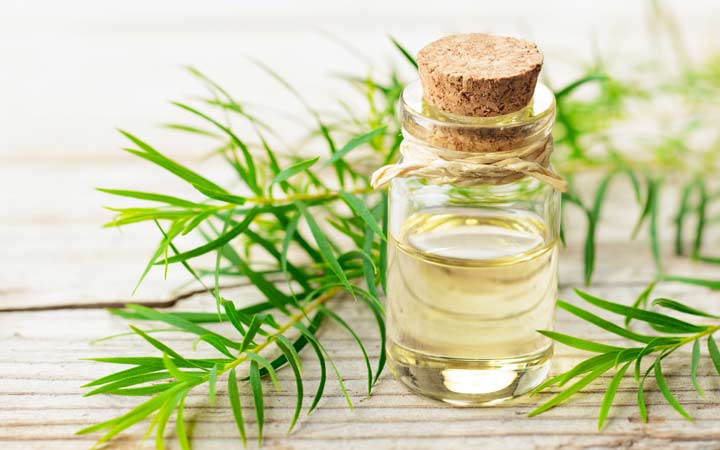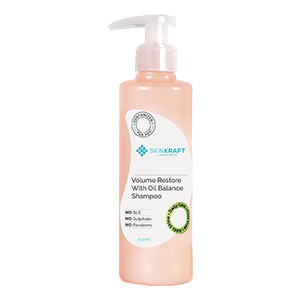Does your scalp constantly feel itchy? Along with the itch, have you noticed patches of flaky skin on your scalp or parts of your body? This could be the result of a condition called seborrheic dermatitis or seborrheic eczema.
Researchers have not found the exact cause of seborrheic dermatitis yet. However, there are proven ways to reduce its symptoms. Here is all you need to know about this condition.
Highlights:
- What Is Seborrheic Dermatitis?
- What Causes Seborrheic Dermatitis?
- Symptoms Of Seborrheic Dermatitis
- Who Is Most Prone To Developing Seborrheic Dermatitis?
- How Is Seborrheic Dermatitis Diagnosed?
- Dermatological Treatments For Seborrheic Dermatitis
- Natural Remedies For Seborrheic Dermatitis
- How To Treat Cradle Cap (Infants)
- Tips To Prevent Seborrheic Dermatitis
- When To See Your Doctor?
- What Foods Trigger Seborrheic Dermatitis?
- Is Seborrheic Dermatitis Contagious? Does It Spread?
- How Long Does Seborrheic Dermatitis Last?
- Should You Wash Your Hair Everyday If You Have Seborrheic Dermatitis?
What Is Seborrheic Dermatitis?
It is a condition that usually affects the scalp, and can be characterized by red, flaky patches of skin and dandruff. The oily parts of your body, like the face, upper chest and back, can also be affected by this condition. [1]
Seborrheic dermatitis is common among infants and is referred to as crib cap. It usually occurs within the first few months of their birth, gradually fades away as they grow.
What Causes Seborrheic Dermatitis?
The exact cause of seborrheic dermatitis is unknown. But researchers suggest that two major factors may contribute to its development. These include an overproduction of oil in the skin and malassezia, a type of fungus that naturally resides in the skin.
Sometimes, it may grow abnormally, irritating the skin and causing it to develop flakes and other signs of irritation. Changes in weather, stress and unhealthy lifestyle choices could also be linked to triggering this condition.
In infants, a fluctuation of hormones may also be the reason of cause.These hormonal imbalances can occur in the mother while her baby is still in the womb. Hormonal imbalances, in some cases, cause the sebaceous glands to overproduce oil, leading to seborrheic dermatitis in infants. [2]
Symptoms Of Seborrheic Dermatitis
- Flaky, itchy skin
- Greasy patches of skin covered in flakes on your scalp, ears, eyelids, chest, face, nose [3]
- Red skin
Who Is Most Prone To Developing Seborrheic Dermatitis?
If an immediate family member has seborrheic eczema, you’re more prone to developing it. Other factors of risk include:
- Obesity
- Poor skin care
- Environmental factors like pollution
- Fatigue
- Other skin conditions like acne
- Medical conditions like HIV, Parkinson’s disease or stroke among others
- Use of harsh skin/hair products
How Is Seborrheic Dermatitis Diagnosed?
Conditions like psoriasis have similar symptoms. So ideally, your doctor should take a sample of your skin and send it to a lab for further testing. A biopsy is usually performed before confirming the condition.
However, he may also inspect the affected areas carefully, following which he may ask you about your medical history and how often you experience the symptoms. Based on this analysis, he may conclude that you have seborrheic eczema.
Dermatological Treatments For Seborrheic Dermatitis
1. Medicated Shampoos
Your doctor may recommend a shampoo that contains hydrocortisone, fluocinolone and desonide. These ingredients are effective in treating seborrheic dermatitis. In case these treatments fail to work, he/she may recommend oral medicines. [4]
2. Antifungal Medication
Terbinafine is prescribed in some cases. Although effective in reducing seborrheic eczema symptoms, this medicine can cause some serious side effects.
Side effects of terbinafine include:
- Fever
- Cough
- Body aches
- Difficulty in breathing
- Feeling of discomfort
- Skin rashes
- Tiredness and joint pains
- Vomiting
3. Metronidazole
Metronidazole is another topical treatment that possesses antibacterial properties. It is usually found as a cream or gel and helps improve symptoms of seborrheic eczema.
4. Psoralen And Light Therapy
Psoralen and light therapy may be used by your doctor to relieve you of seborrheic dermatitis symptoms. Psoralen can be taken orally or applied topically, following which your doctor will expose the affected area to UV light for some time.
Natural Remedies Ror Seborrheic Dermatitis

1. Tea Tree Oil
This oil possesses powerful antimicrobial and anti-inflammatory properties that can help in reducing seborrheic dermatitis symptoms.
How To Use:
Dilute tea tree oil with a carrier oil or add a few drops to your shampoo before applying it to your scalp to prevent allergic reactions.
2. Apple Cider Vinegar
Apple cider vinegar can prove to be effective in loosening the scales on your scalp. It also helps in reducing inflammation.
How To Use:
Add 3 tablespoons of apple cider vinegar to 2 cups of water. Apply it to your scalp after washing it with shampoo. Let the solution sit for a few minutes before you rinse off.
3. Olive Oil
Applying olive oil to your scalp can help gently brush away the flakes.
How To Use:
Apply a layer of olive oil to your scalp and leave it on for an hour or so. Gently brush off the flakes from your scalp and use shampoo to rinse off.
Did You Know?
Primrose, borage and some other essential oils also contain properties that can help improve seborrheic dermatitis symptoms. Mixing these with a carrier oil can prove to be effective in treating the condition.
How To Treat Cradle Cap (Infants)

Cradle cap, more often than not, does not require medication. It tends to disappear on its own. However, if you don’t see an improvement in your child’s seborrheic dermatitis symptoms, you can try the following:
- Massage your baby’s scalp gently or use a soft-bristled brush to loosen scales.
- Use a mild shampoo to wash your baby’s hair and clean his/her scalp.
- Rinse off the shampoo thoroughly.
- Use a soft-bristled brush to gently comb his/her hair. [5]
If you don’t see an improvement in your baby’s symptoms, visit your doctor.
Note:
Do not use any OTC creams or medications on your baby without consulting your doctor.
Tips To Prevent Seborrheic Dermatitis
DOs
- Use an anti-dandruff shampoo immediately, if you find dandruff on your scalp. This will prevent the condition from getting worse.
- Keep your scalp dry and clean at all times.
DON’Ts
- Don’t scrub your scalp too hard. Be gentle.
- Don’t leave your scalp sweaty/wet.
- Don’t start any dermatological treatments before consulting with your doctor.
When To See Your Doctor?
Seborrheic dermatitis isn’t a serious condition. However, the itching, scaling and other symptoms can make it uncomfortable to deal with.
If you have tried home treatments and don’t see any improvement in symptoms, consider visiting your doctor.
If you are constantly dealing with this condition and experience flare-ups from time to time, it is recommended that you visit your doctor.
What Foods Trigger Seborrheic Dermatitis?
A study published in the Journal of Investigative Dermatology took four different diets into consideration: a typical western diet, a diet high in fat, a diet rich in fruits and a diet rich in vegetables (6).
It was found that women following the western diet (high intake of red meats, processed and fried foods) more commonly had seborrheic dermatitis. It was also found that those who ate lots of fruits were at a 25 per cent lower risk of developing seborrheic dermatitis.
Another study conducted on 51 patients with seborrheic dermatitis concluded that there was no relationship between diet and the condition (7).
Is Seborrheic Dermatitis Contagious? Does It Spread?
Seborrheic dermatitis is not contagious, which means it cannot spread from person-to-person. However, it can spread to other parts of the body like the chest,face and other sweaty areas.
How Long Does Seborrheic Dermatitis Last?
Seborrheic dermatitis may, at times, clear up on its own. It can also be chronic and last for years together. Good skincare and the right medication can help relieve you of its symptoms. Flare-ups from time to time are not an unusual occurrence. Keeping your scalp clean and free of sweat is important to prevent the development of seborrheic dermatitis symptoms.
Should You Wash Your Hair Everyday If You Have Seborrheic Dermatitis?
Wash your hair as frequently as recommended by your doctor, based on the medication he/she has prescribed. However, you must ensure that your hair is free of sweat at all times.
Wrapping Up
Now you know that Seborrheic dermatitis is not a serious condition, though it causes an itchy and flaky scalp with dandruff. In infants, this condition is called cradle cap. The condition usually improves on its own. However, you can speed-up the healing process with natural and dermatologically recommended medications. If you don’t see an improvement in symptoms, visit your doctor.
1. https://www.ncbi.nlm.nih.gov/pmc/articles/PMC2888552/
2. https://www.ncbi.nlm.nih.gov/pmc/articles/PMC4852869/
3. https://www.ncbi.nlm.nih.gov/pmc/articles/PMC3100109/
4. https://www.ncbi.nlm.nih.gov/books/NBK551707/
5. https://www.ncbi.nlm.nih.gov/books/NBK531463/
6. https://www.ncbi.nlm.nih.gov/pubmed/30130619
7. http://www.odermatol.com/odermatology/20183/6.Relationship-TamerF.pdf
Recommended Products
Was this Article helpful?
- Least helpful
- Most helpful











